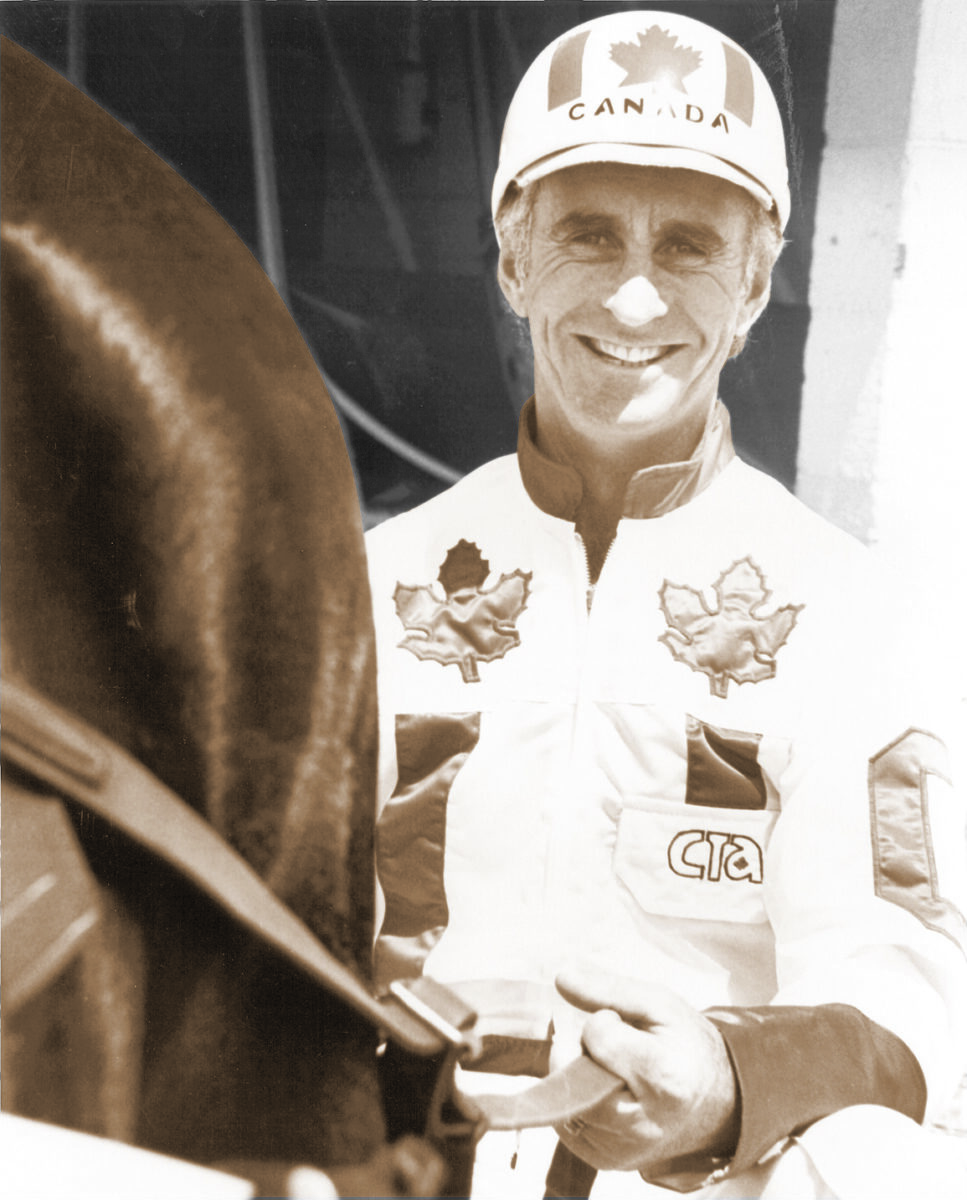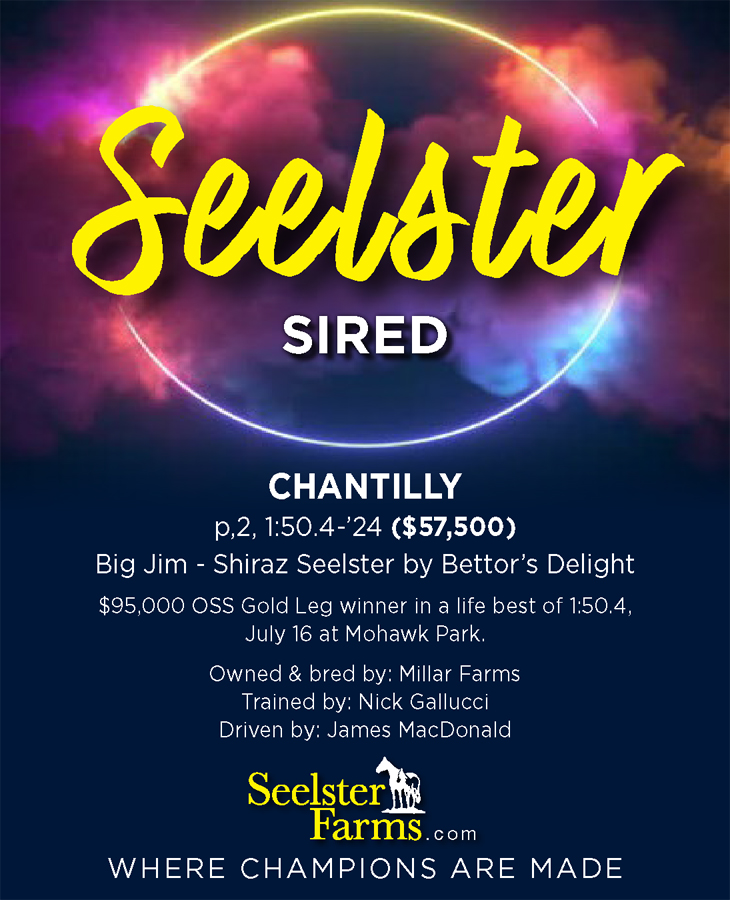

As a horseman and a gentleman, Benoit Cote is a Hall of Famer
by Murray Brown
How is this for a recommendation? Hall of Famers and some who perhaps should be Hall of Famers, Delvin Miller, Stanley Dancer, Joe O’Brien, Aime Choquette, and Glen Garnsey, among others, all sent horses to Benoit Cote to train and drive in Montreal, when Montreal was arguably second only to the New York tracks as the center of harness racing in North America.
Miller asked his right hand-man Choquette who he should send his champion filly Delmonica Hanover to for a stakes’ engagement in Montreal. Choquette’s immediate answer was that Benoit Cote was the man. So, what did Cote do? He set a world record of 2:00.1f with her cruising to a stakes win.
“It’s not difficult to win big races when you are racing top horses” said Cote recently.
But Miller wasn’t the only one. Garnsey sent his top filly Berna Hanover to Cote to train and drive. Dancer sent Norman Woolworth’s top colt Bon Sport to Cote, who won Canada’s richest trotting race at the time with him. O’Brien sent Frosted Yankee and Armbro Luann. Whenever O’Brien had a stakes engagement in Montreal which he couldn’t make, Cote was always his choice.
Benoit Cote just reached his 90th birthday on Friday (March 22). He has now been retired since a career ending injury to an elbow forced an end to his driving career.
Where did it start and how did it progress?
“I first started training and driving in Quebec City when I was just a young kid. My father had raced horses and I learned from him. From Quebec City I went to Montreal where I raced at Parc Richelieu and Blue Bonnets. My first contract job was for les Ecuries Montreal. I worked for them for a couple of years. I then went to work for Gerard Veilleux’s Drummond Stables. I worked for them for a few years more and then trained for Hubert Soucie’s la Ferme Richelieu. They were all wonderful people to work for. Now more than 60 years later I am still good friends with Gerard Veilleux’s son Alain. After Hubert Soucie, I set up my own public stable which I operated until I retired.”
It was while with the Drummond Stables and la Ferme Richelieu that you were part of two of the most noteworthy events in Canadian Harness Racing history.
“In 1959, I had one of my greatest horses ever. Her name was Chief Maid. There were hardly any races for just females back then, so I raced her almost exclusively against stallions and geldings. That year she won 11 of 18 starts racing only against boys. Georges Giguere the racing secretary at Richelieu Park began a racing series called the Canada Pace. On July 19 of that year, she raced in one of the races of the series. She could leave the gate as well as any horse ever. She cut the mile. But I got beat at the finish by Keith Waples driving Mighty Dudley in 1:59.3. That was the first 2:00 mile in Canadian harness history. A few years later, I was driving Monsieur Richelieu, one of Mr. Soucie’s homebred horses and we won over that same Richelieu Park track in 2:00h. That was the first 2:00 mile by a Canadian-bred horse.”
You mentioned Keith Waples. Back then you raced against him and a teenager named Herve Filion often.
“They were both great. Keith didn’t say a whole lot. He was pretty quiet. He let his horses do the talking for him on the racetrack. He was excellent. He took good care of a horse. Rarely did he win a race by more than what he had to. Herve was maybe the greatest driver that ever lived. He patterned himself on the style of Keith Waples. Even when he was just a teenager you knew that you were watching someone who was exceptional.”
In 1981, you were enshrined in the Canadian Horse Racing Hall of Fame. What do you remember of the night?
“Firstly, I was surprised. I was young. My career had been good, but I didn’t think that great. Roger White had been installed a few years previous. Roger had trained and driven great horses. I had some good ones, but none as good as Silent Majority, although arguably my best horse, Semalu D’Amour, was yet to come. I was extremely proud of that honor as I still am today.”
Before I saw Stanley Dancer’s Stable, the three that impressed me the most were yours, Roger White’s and that of Marcel Dostie. Everything was clean and neat; nothing out of place. They looked like museums. White and you of course are in the Hall of Fame. I suppose that because Dostie had such a great career himself and had such a great influence on my career, it upsets me that he isn’t yet in.
“There is no doubt that he belongs. He was an outstanding horseman. Perhaps, he is among some of those that has been overlooked and maybe forgotten by time.”
You mentioned Semalu D’Amour. I’ll introduce another Semalu mare that you also trained and brought along named Midi A Semalu.
“They were both very good fillies but Semalu D’Amour was the better of the two. She was one of the best fillies of her generation. She earned over $880,000. Midi A Semalu was no slouch though. She earned over $500,000. But pedigree buffs would say that she was the better bred of the two, being by Most Happy Fella and out of a full sister to Silent Majority.
“In addition to being a superior broodmare herself, her daughters and granddaughters are responsible for some of the greatest pacers of this era including the Hall of Fame broodmare Precious Beauty and Tall Dark Stranger, Sportswriter and Downbytheseaside. Perhaps the greatest performer from the family is yet to be heard from. In your article last week, Jody Jamieson said that Captains Quarters might become the greatest horse he has ever sat behind. Considering that he drove Bulldog Hanover more than anybody else, that is a huge statement.”
You’ve trained for many wonderful people in addition to the top American trainers that sent horses to you.
“Yes. I’ve been very fortunate to have trained for some wonderful people. In addition to the Veilleux family and Hubert Soucie, I trained the Semalu horses for Dr. Lucien Paiement. I also had some horses for the great Canadiens’ hockey player John Ferguson. I believe that you might have been partners on some of the fillies I raced for Fergie.”
Tell us about Delmonica Hanover.
“Aime Choquette called me. He asked me if I would train and race Delmonica up here for Delvin Miller. Delvin had to be at a golf tournament and asked if Aime could get me to take her. Of course I did. She was great. I had no idea that she had set a world record. She did it so easy. She only went as fast as she needed to. There is no doubt in my mind that she could have gone faster if that had been needed.”
Thinking back to that first 2:00 mile, did you ever think that horses would or could go as fast as they go today?
“The short answer would be no. I certainly thought that they would go faster but I never thought that they would go as fast as they now go. What is amazing is that they do it just about every day at all tracks. I think that the biggest reason is in the breeding. We are breeding a stronger, faster and I think most importantly a sounder horse. If you go to a yearling sale today, the number of poor individuals is smaller than it’s ever been.
“I think the way we race them is another factor. Back then we might leave with a horse, then give it a breather trying to save something for the end of the mile. That doesn’t happen too much today. They are on their toes from beginning to end. Another factor is probably the absence of the hub rail. In addition to making racing safer, taking it out has made the mile shorter.”
Montreal, where you still live used to be a major hub of harness racing. Great horses and great stables raced there regularly. Now there is no racing at all in the entire province of Quebec except for a small seasonal meet at Trois Rivieres.
“It is indeed a great tragedy. It makes me quite sad whenever I think of it. If you were asking for reasons, I suppose that the major reason would be the Casino de Montreal on the island. But there are other reasons, most of them are political. The horsemen and the horsemen’s association are also to blame. Their efforts to preserve racing were minimal and relatively inconsequential. Since the track shut down there has been no activity on the grounds. Some of the most prime real estate on the island of Montreal has gone unused for 16 years. The land is owned by the city and they haven’t done anything with it.
“Quebecers, more specifically French Canadians, love harness racing. Just look at the racing at Mohawk. I wouldn’t say that it is dominated by Quebecers, but there is no doubt that they are quite active there. The leading trainer just about every year is Richard Moreau. Then look at some of the names in the trainers’ colony: Tourigny, Baillargeon, Blais, Dupont, Bourassa, Dumouchel, Guillemette, Chretien, Jones, Simard and Zeron. There are numerous Quebec based owners. Two of the best of a great drivers’ colony are Louis-Philippe Roy and Sylvain Filion.”
















